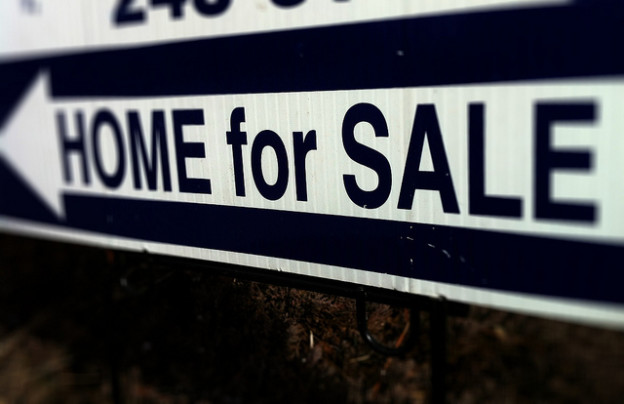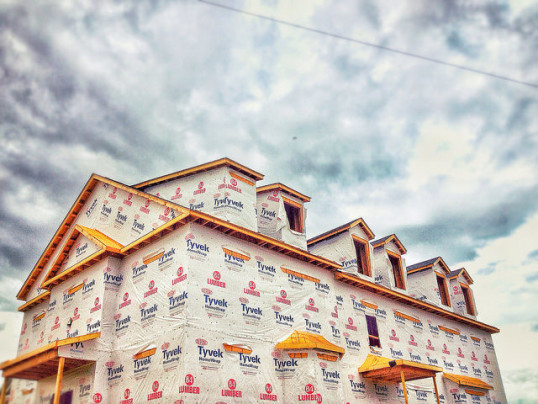The Mortgage Bankers Association’s Weekly Applications Survey tracks changes in average mortgage rates and mortgage loan application volume. According to the most recent release, mortgage rates increased slightly on 30-year fixed-rate mortgages with conforming loan balances and on 15-year fixed-rate loans last week. Loans with jumbo balances and those backed by the Federal Housing Administration were unchanged from the previous week. Despite the uptick in average interest rates, demand for loans to buy homes was up from the week before, rising 3 percent. But, due to a 6 percent drop in refinance volume, the Market Composite Index – which measures total mortgage loan application volume – fell 2.6 percent. Several weeks of declining mortgage rates caused refinance activity to pick up recently. However, with interest rates up the past two weeks, refinance demand has fallen and led to consecutive weeks of declining application volume. The MBA’s weekly survey has been conducted since 1990 and covers 75 percent of all retail residential mortgage applications. More here.
Archive for November 2014
Homeownership Low Among Young Americans
According to new numbers released by the U.S. Census Bureau, the share of Americans who own their own homes fell to 64.4 percent in the third quarter, down from 64.7 percent in the previous quarter. The decline brought homeownership to its lowest level in nearly 20 years, though it is still in line with its historical average. In fact, between 1965 and 1999, the homeownership rate averaged 64.5 percent. It peaked in 2004, when it reached 69.2 percent. Still, a closer look at the numbers reveals some of the reasons behind the declining number of homeowners over the past 10 years. For example, when broken down based on age, the data shows that the number of homeowners under the age of 35 has fallen to 36 percent. By comparison, the homeownership rate among Americans over the age of 65 is 80 percent. The declining number of young homeowners highlights the fact that first-time home buyers have been underrepresented in the current market. Over the past three months, for example, they accounted for just 29 percent of home sales. Historically, the share of first-time buyers is closer to 40 percent. Also in the report, homeownership was highest in the Midwest, at 68.8 percent, and lowest in the West, at 59.4 percent. More here.
Economists Expect Big Year For New Home Market
A panel of economists participating in an event sponsored by the National Association of Home Builders said they expect 2015 to be a good year for single-family housing production. A combination of favorable mortgage rates, a growing economy, improved job creation, and pent-up demand is expected to boost the number of new homes being built and sold in the next year. Mark Zandi, chief economist at Moody’s Analytics, said job growth is the chief reason for the optimistic forecast. According to Zandi, with 225,000 jobs created each month, unemployment should continue to decline, improving conditions for the housing market and releasing pent-up demand for new homes. In fact, he believes that current new home construction won’t be enough to keep up with rising demand over the long term. Nationwide, housing production fell to its lowest level in early 2009, hitting just 27 percent of normal activity. According to the NAHB’s outlook, it should be at 68 percent of normal by the end of 2015 and at 90 percent of normal by the end of 2016. More here.
Buying A Home Is Cheaper Than Renting
According to a new analysis from Trulia, homeownership is cheaper than renting in all 100 of the country’s largest metropolitan areas. In fact, homeownership is now 38 percent cheaper than renting nationally, which is an improvement over last year when buying was just 35 percent more affordable than rent. Falling mortgage rates are among the chief reasons for this widening gap. Average rates are now significantly lower than they were last year at this time. In addition, rent has been rising faster than home prices due to high demand among young adults who are ready to establish households of their own but aren’t able to afford the necessary down payment. Down payments, however, are a chief factor in determining what is more affordable between buying a home and renting. For example, buying a home with a smaller down payment makes homeownership less favorable financially due, in part, to the fact that less money down means a higher monthly mortgage payment. Trulia’s calculations are based on a traditional 30-year fixed-rate mortgage with a full 20 percent down payment. More here.




